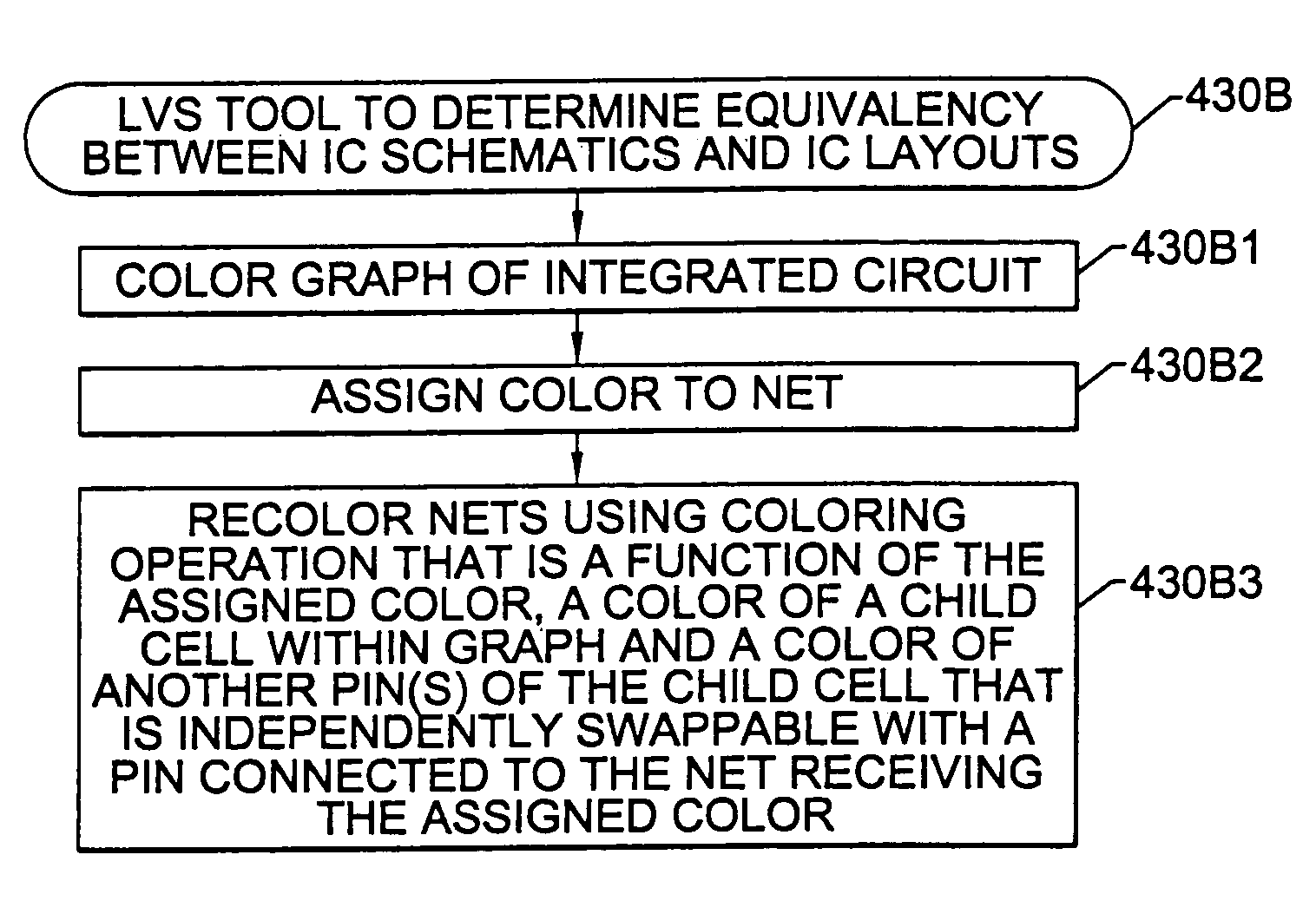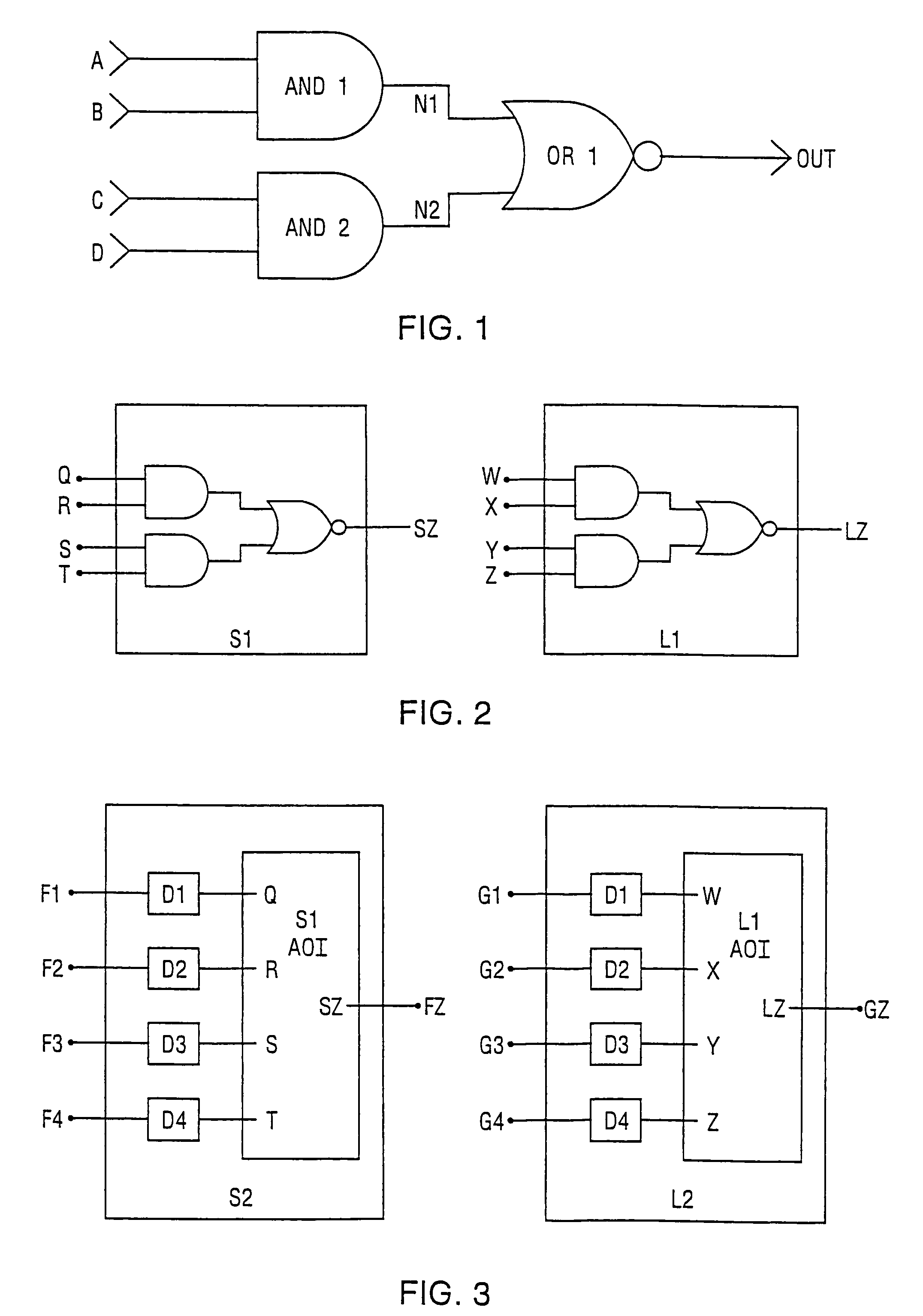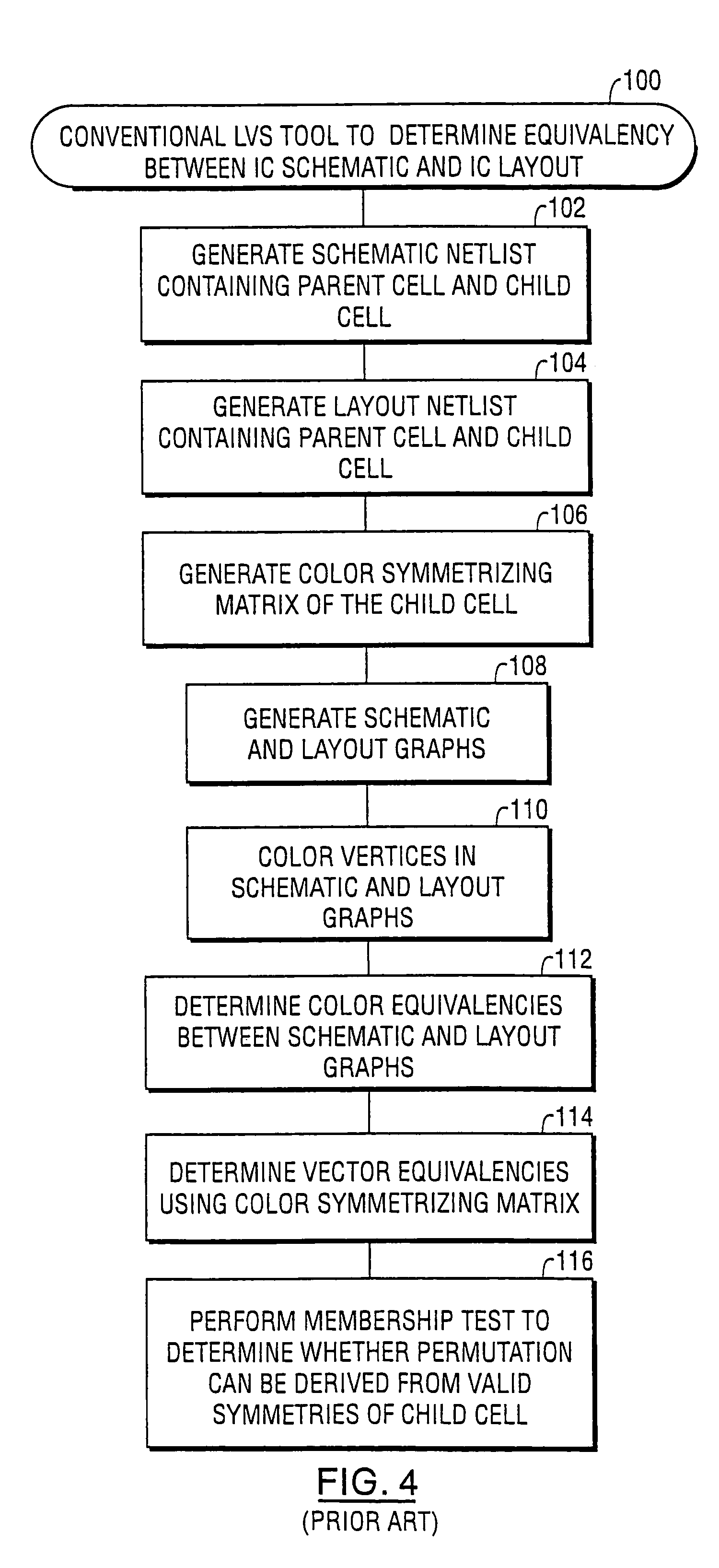Methods, apparatus and computer program products that perform layout versus schematic comparison of integrated circuits using advanced pin coloring operations
a technology of integrated circuits and pin coloring, applied in the field of apparatus and methods for verifying microelectronic circuits and systems, can solve the problems of ambiguity in selecting matching nodes, computational intractable problems, and performance of these operations
- Summary
- Abstract
- Description
- Claims
- Application Information
AI Technical Summary
Benefits of technology
Problems solved by technology
Method used
Image
Examples
first embodiment
[0087]Referring now to FIGS. 20–21, preferred operations performed by embodiments of a layout versus schematic (LVS) comparison tool 430A according to the present invention will be described. These operations include coloring a graph of an integrated circuit to an equilibrium state and then identifying a “provisional” swap group of nodes having the same color within the colored graph, Blocks 430A1, 430A2. The colored graph may be a colored layout graph or a colored schematic graph of the integrated circuit. For example, as illustrated by FIG. 21, the colored graph may be a colored bipartite graph having both net and device nodes therein. This “provisional” swap group of nodes corresponds to pins of a device that may be swappable by virtue of the fact that the nodes associated with the pins have the same color after a graph coloring operation has been performed. A new (e.g., unique) color is then assigned to a node within the identified swap group, Block 430A3. An operation is then p...
second embodiment
[0093]Referring now to FIGS. 22–26, preferred operations performed by a layout versus schematic (LVS) comparison tool 430B according to the present invention will be described. These operations include coloring a schematic graph of a parent cell to obtain a first set of net colors for a first plurality of nets in the schematic graph, Block 430B1. Next, a new color is assigned to a first net in the first plurality of nets, Block 430B2. This first net is connected to a first pin of a child cell within the parent cell. The new assigned color is preferably unique to the other colors in the first set. A net recoloring operation is then performed, Block 430B3. This net recoloring operation preferably includes recoloring the first set of net colors by determining a new color for the first net using a coloring operation that is a function of the assigned color, a color of the child cell (i.e., device value of the child cell) and a color of each of the first plurality of nets that are electr...
PUM
 Login to View More
Login to View More Abstract
Description
Claims
Application Information
 Login to View More
Login to View More - R&D
- Intellectual Property
- Life Sciences
- Materials
- Tech Scout
- Unparalleled Data Quality
- Higher Quality Content
- 60% Fewer Hallucinations
Browse by: Latest US Patents, China's latest patents, Technical Efficacy Thesaurus, Application Domain, Technology Topic, Popular Technical Reports.
© 2025 PatSnap. All rights reserved.Legal|Privacy policy|Modern Slavery Act Transparency Statement|Sitemap|About US| Contact US: help@patsnap.com



